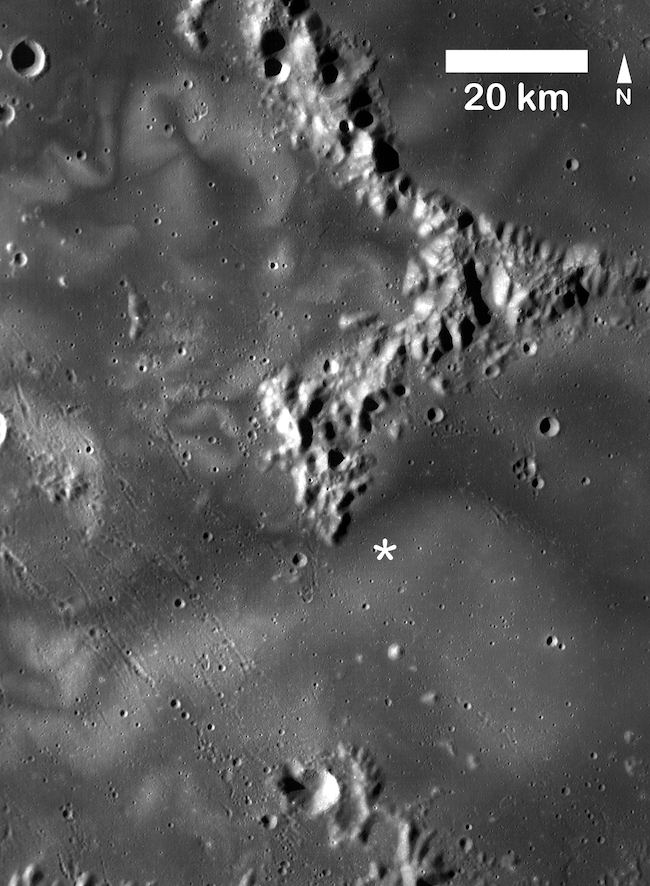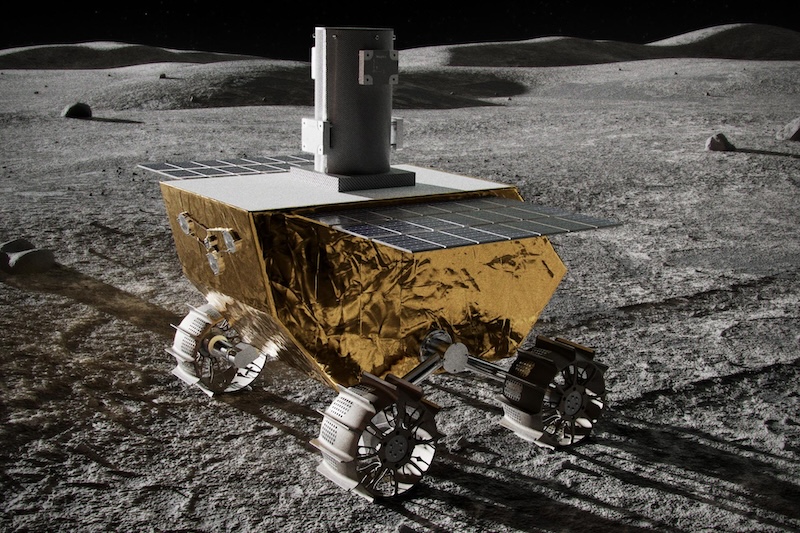- Scientists have been trying to solve the mystery of unusual swirls on the moon that look like meandering, light-colored patches on darker lunar surface.
- A new study suggests they’re due to magma below the ground, which magnetizes rocks on the surface. The process likely involves the mineral ilmenite.
- In 2025, NASA will send the Lunar Vertex rover to investigate one of the swirls, called Reiner Gamma.
Lunar swirls are light-colored patches that almost look painted on the darker lunar surface. Some of them are hundreds of miles long. What causes them? So far, that’s remained a bit of a mystery. Scientists know the rocks within the swirls are magnetized, but the moon doesn’t have a magnetic field. Some may be the result of meteorite impacts. But for others, the explanation may be below the surface. On June 28, 2024, researchers at Washington University in St. Louis proposed a new possibility: magma.
The scientists published their peer-reviewed findings in JGR Planets on May 20, 2024.
Mysterious swirls on the moon
The sinuous swirls are a unique feature on the moon. They appear lightly painted or dusted on the surface, like some kind of cosmic artwork. But how they got there has been a mystery for scientists. The one big clue is rocks within the swirls are magnetized, even though the moon lacks a global magnetic field. In fact, the magnetized rocks deflect incoming particles from the solar wind. The rocky terrain outside the swirls gets hit by the particles instead, darkening in color as a result. This is why the swirls appear brighter. The paper stated:
While the moon does not have a magnetic field today, some parts of its crust such as impact basins and bright and sinuous features called “lunar swirls” are still magnetized. Strongly magnetized regions observed within impact basins could be related to iron-rich material derived from impactors.
The puzzle is why the rocks are magnetized in the first place. With this in mind, scientists said meteorite impacts could cause some magnetic anomalies. Maybe even some of the swirls, but probably not all of them. Also, an earlier study suggested comet impacts. The paper added:
However, other magnetized regions, such as those associated with lunar swirls, are not as conclusively linked to externally added materials.
Michael J. Krawczynski of Washington University in St. Louis is one of the three authors of the new study. As he explained:
Impacts could cause these types of magnetic anomalies. But there are some swirls where we’re just not sure how an impact could create that shape and that size of thing.

Subsurface magma
So, if some swirls are not produced by meteorite or comet impacts, then what could cause them? The researchers said underground magma is a good possibility. The lava pools would have their own localized magnetic fields. Krawczynski said:
Another theory is that you have lavas underground, cooling slowly in a magnetic field and creating the magnetic anomaly.
Ilmenite could magnetize moon rocks
To test the theory, the researchers used a mineral called ilmenite, which is abundant on the moon. Ilmenite can become magnetized under the right conditions. This is similar to magnetite on Earth, but that mineral is rare on the moon. So instead, the researchers used ilmenite in their study. They measured the effects of different combinations of atmospheric chemistry and magmatic cooling rates on the ilmenite, to try to magnetize it. Krawczynski said:
Earth rocks are very easily magnetized because they often have tiny bits of magnetite in them, which is a magnetic mineral. A lot of the terrestrial studies that have focused on things with magnetite are not applicable to the moon, where you don’t have this hyper-magnetic mineral.
And it worked, in particular for the smaller grains of ilmenite. As lead author Yuanyuan Liang of Washington University in St. Louis noted:
The smaller grains that we were working with seemed to create stronger magnetic fields because the surface area to volume ratio is larger for the smaller grains compared to the larger grains. With more exposed surface area, it is easier for the smaller grains to undergo the reduction reaction.
Overall, the results showed ilmenite could indeed become magnetized enough to affect the rocks on the surface, creating the swirls. According to Krawczynski:
Our analog experiments showed that at lunar conditions, we could create the magnetizable material that we needed. So, it’s plausible that these swirls are caused by subsurface magma.

Magma rich in titanium
One caveat to the theory, however, is that the magma probably needs to contain large amounts of titanium. As Krawczynski explained:
If you’re going to make magnetic anomalies by the methods that we describe, then the underground magma needs to have high titanium. We have seen hints of this reaction creating iron metal in lunar meteorites and in lunar samples from Apollo. But all of those samples are surface lava flows, and our study shows cooling underground should significantly enhance these metal-forming reactions.
If we could just drill down, we could see if this reaction was happening. That would be great, but it’s not possible yet. Right now, we’re stuck with the surface.
Lunar Vertex will investigate swirls on the moon
Now, NASA wants to take a closer look at the swirls. In 2025, the Lunar Vertex mission will study the magnetic anomalies of the moon. This includes sending a rover to the lunar swirl Reiner Gamma. Lunar Vertex will be NASA’s first PRISM mission (Payloads and Research Investigations on the Surface of the Moon), using privately built landers. It will carry a camera array, a magnetometer and a plasma spectrometer.
Bottom line: Scientists at Washington University in St. Louis said odd, light-colored swirls on the moon may be the result of rocks magnetized by magma below the surface.
Source: Possibility of Lunar Crustal Magmatism Producing Strong Crustal Magnetism
Via Washington University in St. Louis
Read more: Chang’e 6 moon mission returns 1st far side sample to Earth
Read more: The moon: 5 myths about our natural satellite